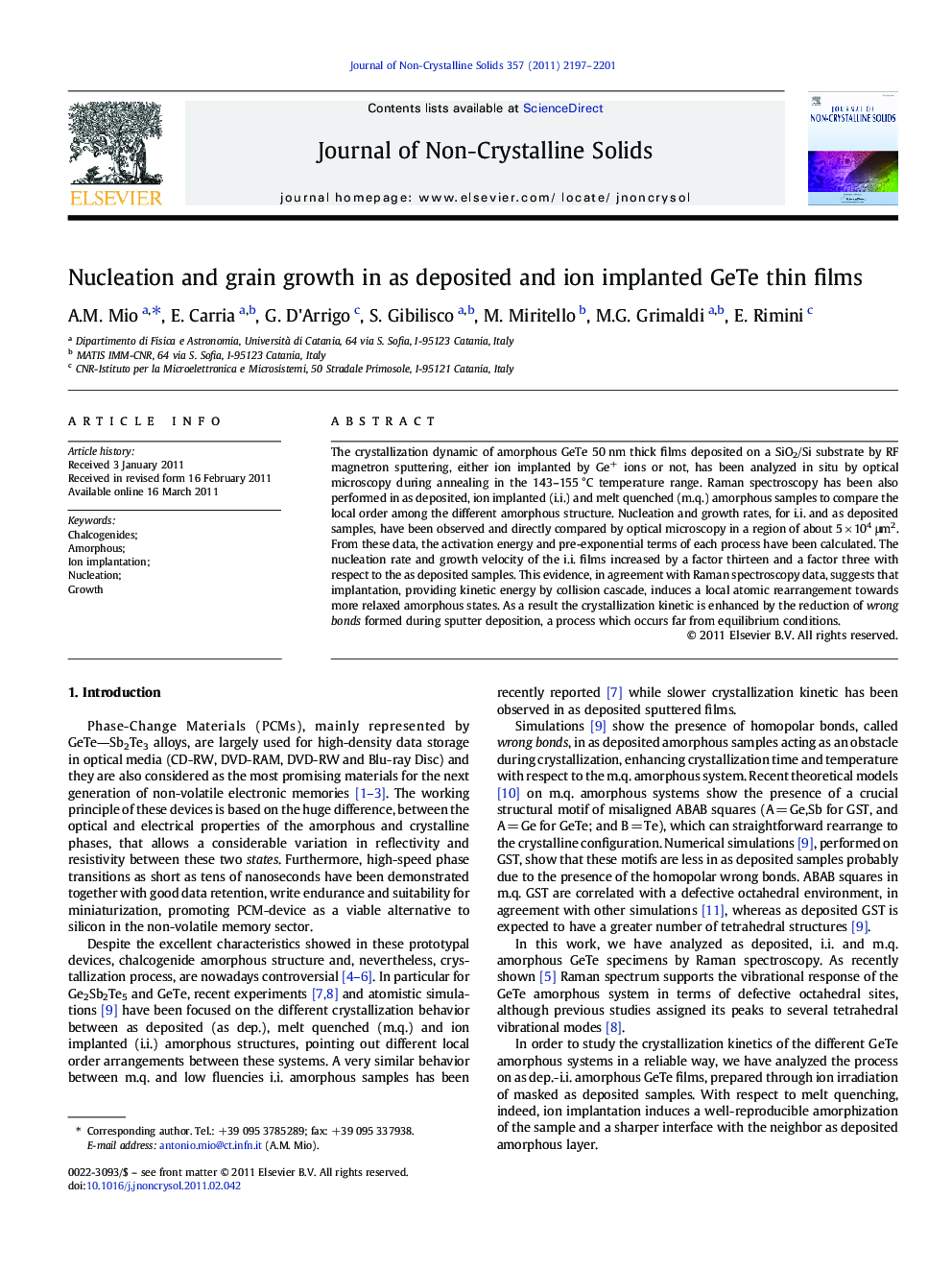| Article ID | Journal | Published Year | Pages | File Type |
|---|---|---|---|---|
| 1482335 | Journal of Non-Crystalline Solids | 2011 | 5 Pages |
The crystallization dynamic of amorphous GeTe 50 nm thick films deposited on a SiO2/Si substrate by RF magnetron sputtering, either ion implanted by Ge+ ions or not, has been analyzed in situ by optical microscopy during annealing in the 143–155 °C temperature range. Raman spectroscopy has been also performed in as deposited, ion implanted (i.i.) and melt quenched (m.q.) amorphous samples to compare the local order among the different amorphous structure. Nucleation and growth rates, for i.i. and as deposited samples, have been observed and directly compared by optical microscopy in a region of about 5 × 104 μm2. From these data, the activation energy and pre-exponential terms of each process have been calculated. The nucleation rate and growth velocity of the i.i. films increased by a factor thirteen and a factor three with respect to the as deposited samples. This evidence, in agreement with Raman spectroscopy data, suggests that implantation, providing kinetic energy by collision cascade, induces a local atomic rearrangement towards more relaxed amorphous states. As a result the crystallization kinetic is enhanced by the reduction of wrong bonds formed during sputter deposition, a process which occurs far from equilibrium conditions.
Research highlights►Sputtered and ion implanted amorphous GeTe investigated by optical microscopy. ►Nucleation and growth processes have been individually studied in these systems. ►Enhanced rates have been found for both processes for implanted samples. ►Raman spectroscopy performed on as dep., implanted and melt quenched GeTe. ►Wrong Te―Te bonds slowing down crystallization present in the as dep. sample.
